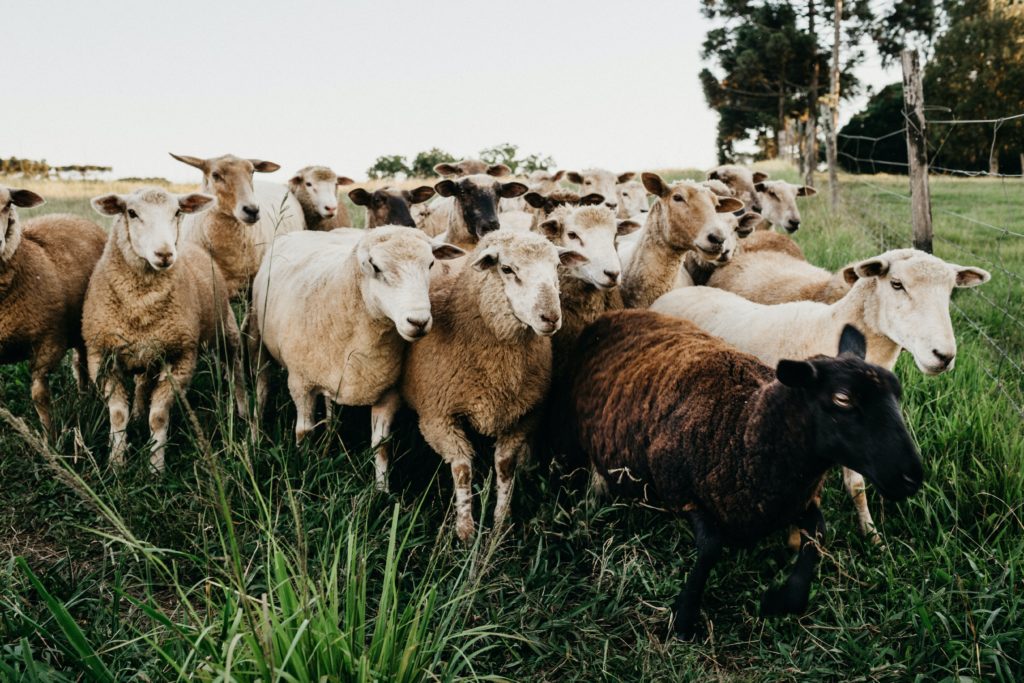In the world of livestock farming, understanding market dynamics and consumer preferences is essential for success. One fascinating niche within the industry is the market for lamb and goat meat during special holidays celebrated by various religious and cultural communities. These holidays provide a unique opportunity for sheep and meat goat producers to plan their breeding seasons strategically and market their animals at the ideal size for these occasions.
The significance of this non-traditional lamb market in the United States, particularly among ethnic consumers, cannot be underestimated. Researchers have found that “minority populations account for about 58% of the total US lamb consumption, and nearly three-quarters of minority lamb consumers prepare lamb at home.” This underscores the importance of catering to these diverse consumer groups.
For livestock producers aiming to tap into these ethnic markets, several factors come into play. These include the weight and sex of the animals and the method by which the meat is slaughtered. Different religious traditions have specific dietary laws that dictate the process.

https://dldlabs.com/goat-sheep-services/
Islamic Markets: Halal Requirements
In Islamic markets, meat must be harvested according to halal dietary laws. These laws prescribe specific methods of slaughter and handling to ensure that the meat is considered pure and permissible for Muslims. To cater to this market, it’s essential to meet these requirements, demonstrating respect for the traditions of Muslim consumers.
Jewish Markets: Kosher Requirements
Similarly, in Jewish markets, meat must adhere to kosher dietary laws. These laws outline the proper way to slaughter, prepare, and consume meat according to Jewish tradition. Ensuring that your animals meet these standards is crucial for selling to Jewish consumers.
Ethnic Markets: Size and Presentation Matters
When selling to ethnic markets, the size and presentation of the animals are crucial considerations. Consumers often have specific preferences regarding the size and age of the animals they purchase for holiday celebrations.
Here are some key holidays and the corresponding preferences for lamb and goat sizes:
Christian Holidays:
- Western or Roman Easter: Ideal for milk-fed lambs weighing between 30 and 45 pounds. Goats should be milk-fed kids weighing between 20 and 40 pounds.
- Eastern or Greek (Orthodox) Easter: Slightly heavier than Western Easter, with lambs and goats weighing between 40 and 55 pounds and 25 to 50 pounds, respectively.
- Thanksgiving: Finished weight lambs, 110 lbs. and heavier, are appropriate.
- Christmas: Milk-fed lambs and kids are preferred, with ideal weights for lambs being 40 to 60 pounds and under 50 pounds for kids.
Islamic Holidays:
- Eid ul Adha (The Festival of Sacrifice): Heavier lambs and goats are preferred since the meat is shared. Yearling lambs and goats are also acceptable.
- Muharram (Islamic New Year): No specific recommended size; animals should appear healthy.
- Mawlid al-Nabi: No specific recommended size.
- Ramadan: Lambs should weigh 60 to 80 pounds, while goats should have a perfect weight of 60 pounds, with weights of 45 to 120 pounds being acceptable.
- Eid al Fitr (The Breaking of the Ramadan Fast): Consistent with Ramadan, lambs should weigh 60 to 80 pounds, and goats should weigh 60 pounds.
Jewish Holidays:
- Pesach (Passover): Lambs should be milk-fed, fat, and weigh between 30 and 55 pounds.
- Rosh Hashanah (Jewish New Year): Front quarters of lambs weighing 60 to 100 pounds are preferred.
- Chanukkah (Festival of Lights): Young milk-fed lambs and kids are preferred.
https://meat.tamu.edu/ansc-307-honors/kosher-halal/
Understanding these holiday dates and corresponding preferences is instrumental in planning breeding seasons and marketing your animals effectively. By providing the right size and quality of lambs and kids, you can cater to the diverse and vibrant market of holiday celebrations within your community.
In the context of these holidays, it’s crucial to keep in mind that the dates on which they occur can vary each year. Different religious traditions follow different calendars, and the holidays are determined accordingly.
- The Gregorian calendar, which is widely used internationally, is followed by Western Christian holidays.
- Orthodox Christians follow the Julian calendar, which slightly differs from the Gregorian calendar.
- Muslim holidays are based on a lunar calendar, which is about 11 days shorter than the Gregorian calendar.
- Jewish holidays, on the other hand, occur at the same time each year on a Jewish calendar, which has a different length than the Julian calendar.
Being aware of these calendar differences and keeping track of holiday dates is essential for effective holiday marketing.
In conclusion, understanding and catering to the unique preferences of consumers during special holidays is a valuable opportunity for sheep and meat goat producers. By aligning breeding seasons with these holidays and providing the right size and quality of animals, farmers can not only meet the demands of diverse consumer groups but also contribute to the rich tapestry of holiday traditions celebrated within their communities. With careful planning and respect for religious dietary laws, livestock producers can thrive in this thriving niche market.

